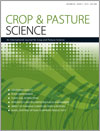CP12062‘Haying-off' in wheat is predicted to increase under a future climate in south-eastern Australia
Under a future climate for south-eastern Australia there is the likelihood that the combined effect of elevated carbon dioxide, lower spring rainfall and high temperature will increase haying-off in wheat crops, thus limit production. We used a simulation modelling approach and found in the semiarid cropping zones of Victoria, a 45% increase in the frequency of haying-off occurred when crops were sown near the historically optimal time (01-June), which translated to an 8% reduction in average yield. We found sowing earlier (01-May) reduced the impact of a future climate on haying-off, thus appears to be an important management strategy for maintaining wheat production in semiarid cropping regions into the future.




